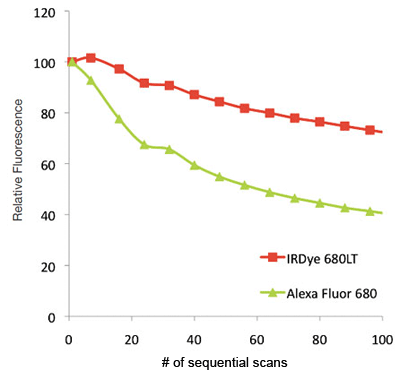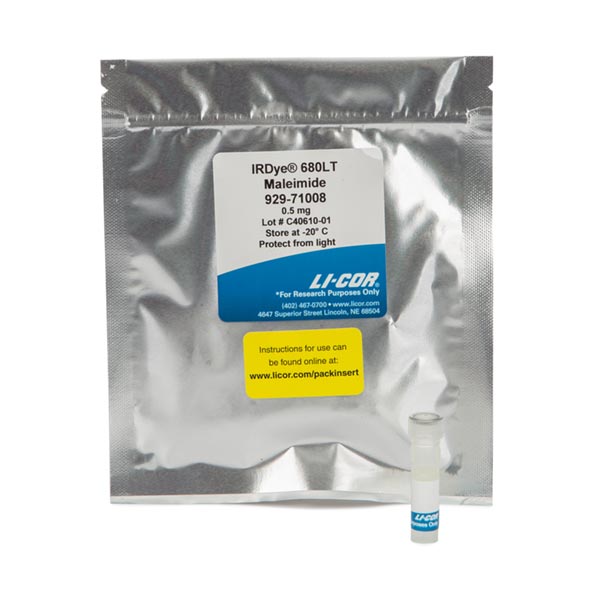IRDye® 680LT Infrared Dyes
Products
Note: IRDye 680LT dye products should not be used for small animal in vivo imaging or In-Cell Western™ Assays. The higher level of fluorescent intensity creates high background making it unfavorable for use in these applications. We recommend using IRDye 680RD dye products for these applications.
IRDye 680LT dye is highly soluble in water and is significantly brighter and more photostable than many other 700 nm near-infrared dyes, such as Alexa Fluor® 680. The spectral characteristics of IRDye 680LT are well suited for use on LI-COR imaging systems with absorbance and emission maxima in aqueous solution and methanol of 676 and 693 nm, respectively. IRDye 680LT exhibits low background at near-infrared wavelengths resulting in higher signal-to-noise ratios.
IRDye 680LT dye conjugates can be used for quantitative Western blotting and fluorescence microscopy. When using IRDye 680LT secondary antibodies for Western blot detection, it is critical to follow the recommendations in the pack insert. Dilution optimization may be required to achieve best results.
Other Forms Available
IRDye 680LT NHS ester is available in labeling kits so that you can label your own compounds for assay or probe development.
IRDye 680LT dye-conjugated forms are available from LI-COR, including:
- Secondary antibody conjugates, including goat and donkey secondary antibodies
- Streptavidin
IRDye 680LT Dyes and Conjugates Used in Various Applications
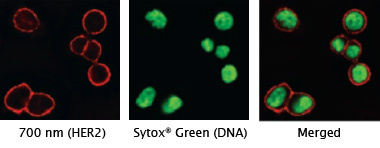
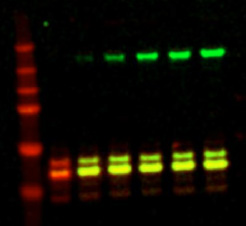
IRDye 680LT Matches or Surpasses the Brightness and Photostability of Alexa Fluor 680
The fluorescence intensity of each conjugate increased with increased degree of labeling. Figure 1 shows that the dynamic range for IRDye 680LT Goat anti-Rabbit is much broader than that of the Alexa Fluor 680 dye-conjugate, which quickly levels off above D/P 3.4. Alexa Fluor 680 conjugates’ fluorescence intensities level off due to self-quenching. IRDye 680LT conjugates continue to increase in fluorescence intensity to at least D/P 6.4, which was the highest degree of labeling tested. Overall, IRDye 680LT is significantly brighter than Alexa Fluor 680.
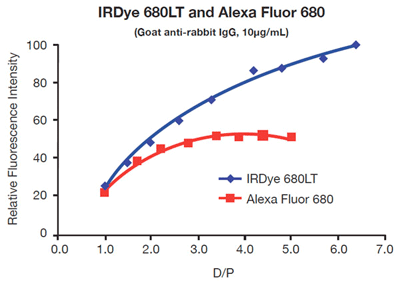
The photostability of IRDye 680LT was compared to Alexa Fluor 680 in Figure 2. The relative fluorescence of the IRDye 680LT exhibited greater photostability over Alexa Fluor 680.
